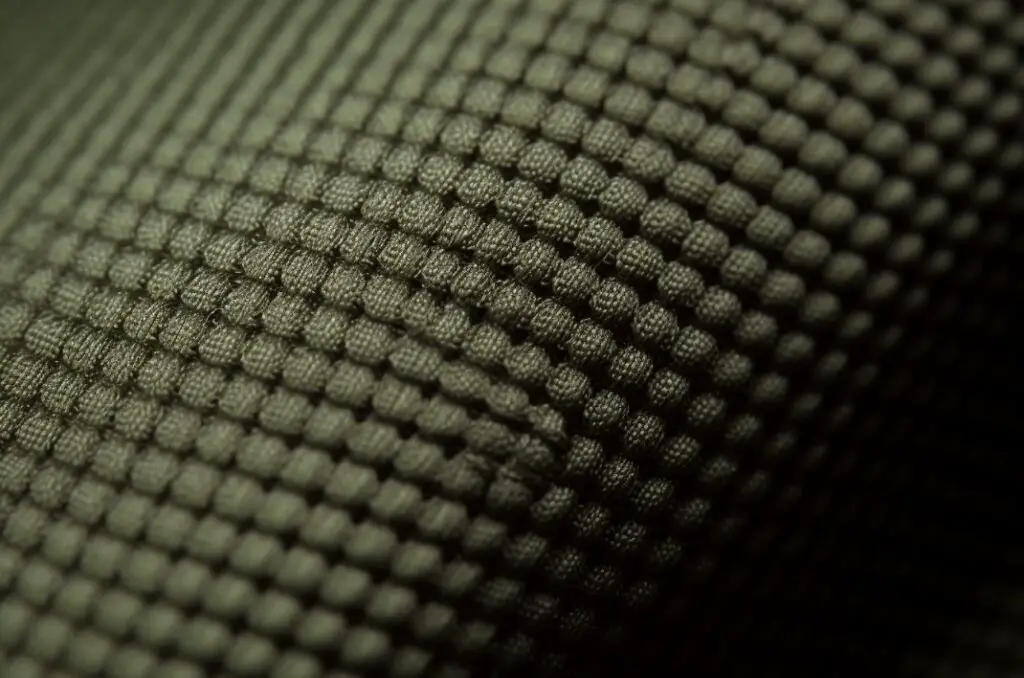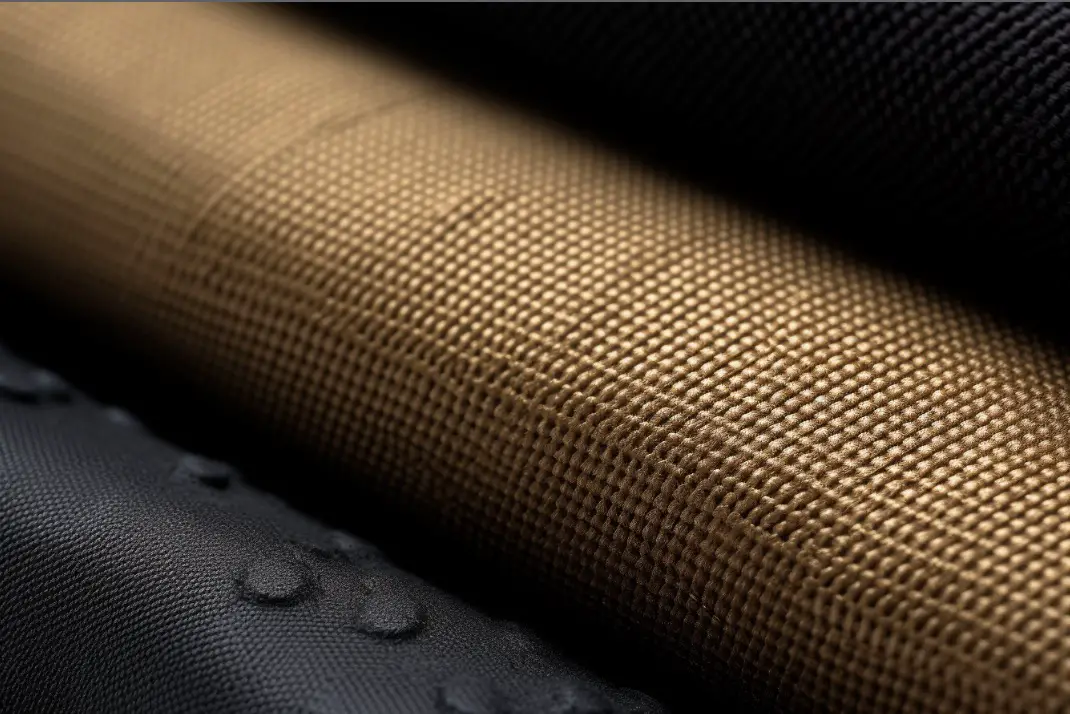In the world of durable textiles, Kodra and Cordura stand out as two of the most popular options.
Both materials are known for their strength, durability, and resistance to abrasion, making them ideal choices for a variety of applications, including backpacks, luggage, and outdoor gear. But how do these two fabrics compare, and which one is the better choice for your needs?
In this blog post, we will take an in-depth look at the differences between Kodra and Cordura, examine their respective strengths and weaknesses, and ultimately, help you make an informed decision based on your specific requirements.
A Brief History of Kodra and Cordura
The Origins of Kodra
Kodra fabric was initially developed in South Korea as a more economical alternative to Cordura. It is a high-density nylon fabric that has been specifically engineered to provide excellent durability and resistance to abrasion.
The manufacturing process of Kodra involves a series of steps, including weaving, dyeing, and treating the fabric with a special coating that enhances its strength and water resistance. Over the years, Kodra has gained popularity in various industries, most notably in the production of backpacks, luggage, and outdoor gear.
The Evolution of Cordura
Cordura, on the other hand, has a longer history, dating back to the 1970s when it was developed by DuPont, a leading chemical company based in the United States.

Originally designed for military applications, Cordura fabric quickly gained popularity in the civilian market due to its impressive durability and resistance to wear and tear.
Today, Cordura is a registered trademark of INVISTA, a subsidiary of Koch Industries, and is used in an extensive range of products, including backpacks, luggage, footwear, and even motorcycle gear.
The Key Differences Between Kodra and Cordura
Material Composition
The primary difference between Kodra and Cordura lies in their material composition.While both fabrics are made of high-density nylon, Cordura is typically made from 500-1000 denier nylon, whereas Kodra is usually made from 600-1000 denier nylon. Denier refers to the thickness of the individual fibers used in the fabric, with higher numbers indicating thicker and more durable fibers.
Durability and Abrasion Resistance
Both Kodra and Cordura fabrics are known for their durability and resistance to abrasion, but Cordura tends to have a slight edge in this regard. The tighter weave of Cordura fabric, along with its higher denier count, contributes to its superior strength and longevity.
Water Resistance
Kodra and Cordura fabrics are both treated with a special coating to enhance their water resistance. However, Cordura typically undergoes a more sophisticated treatment process, which involves the application of an air-texturized yarn that provides additional water repellency. As a result, Cordura fabric generally offers better protection against moisture compared to Kodra.
Price
One of the main advantages of Kodra over Cordura is its lower price point. Since Cordura is a trademarked fabric, it often comes with a higher price tag compared to non-branded alternatives like Kodra. For budget-conscious consumers, Kodra can be an attractive option that still offers good durability and performance.
Applications: Where to Use Kodra and Cordura
Backpacks and Luggage
Both Kodra and Cordura fabrics are widely used in the production of backpacks and luggage, thanks to their excellent durability and abrasion resistance. While Cordura may be a more popular choice due to its superior performance, Kodra can still be a suitable option for those looking for a more affordable alternative.
Outdoor Gear and Clothing
Kodra and Cordura fabrics are also commonly used in the production of outdoor gear and clothing, such as jackets, pants, and gloves. Their resistance to abrasion and water makes them ideal for activities like hiking, camping, and mountaineering.
Footwear
Cordura, in particular, is a popular choice for footwear, especially in the production of hiking boots and other outdoor shoes. Its excellent durability and water resistance make it a suitable choice for footwear that needs to withstand harsh conditions and rough terrain.
The Verdict: Which is Better – Kodra or Cordura?
Ultimately, the choice between Kodra and Cordura largely depends on your specific needs and budget.
If you’re looking for the best possible performance in terms of durability, abrasion resistance, and water protection, then Cordura is likely the better choice.
However, if you’re on a tight budget and are willing to compromise slightly on performance, Kodra still offers a respectable option that can serve you well in various applications.
Conclusion: Kodra vs Cordura – The Final Verdict
In conclusion, both Kodra and Cordura fabrics offer excellent durability and resistance to abrasion, making them ideal choices for a wide range of applications. Here are ten key facts to remember when deciding between Kodra and Cordura:
1. Kodra fabric was initially developed in South Korea as a more economical alternative to Cordura.
2. Cordura fabric has a longer history, dating back to the 1970s, and was originally designed for military applications.
3. Both fabrics are made of high-density nylon, with Cordura typically having a higher denier count.
4. Cordura tends to have superior durability and abrasion resistance compared to Kodra.
5. Both fabrics are treated with a special coating to enhance their water resistance, but Cordura generally offers better protection against moisture.
6. Kodra fabric is usually more affordable than Cordura.
7. Both fabrics are widely used in the production of backpacks, luggage, outdoor gear, and clothing.
8. Cordura is a popular choice for footwear, particularly hiking boots and outdoor shoes.
9. The choice between Kodra and Cordura depends on your specific needs and budget.
10. If you’re looking for the best possible performance, Cordura is the better choice, but Kodra can still be a suitable option for those on a tighter budget.
FAQs
What makes a good quality backpack?
A good quality backpack should have durable materials, comfortable straps and padding, multiple compartments for organization, and appropriate size and weight for its intended use.
Is all Cordura fabric waterproof?
No, not all Cordura fabric is waterproof. The level of water resistance depends on the specific type of Cordura fabric and its finish. Some Cordura fabrics may have a coating or laminate that makes them waterproof, while others may only be water-resistant or not water-resistant at all.
Is Cordura fabric water resistant?
Yes, Cordura fabric is water-resistant. It is made from high-tenacity nylon fibers that are tightly woven together, creating a fabric that is highly durable and resistant to abrasion, tears, and punctures. Additionally, Cordura fabrics are often treated with a durable water repellent (DWR) coating, which helps to repel water and prevent it from soaking into the fabric.
How water resistant is 500D Cordura?
500D Cordura is highly water-resistant and can withstand light to moderate rain and moisture exposure. However, it is not completely waterproof and may eventually allow water to seep through over prolonged exposure or heavy rainfall.
Which material is better for backpacks?
There is no one “best” material for backpacks, as it depends on the intended use and personal preference. Some common materials used for backpacks include nylon, polyester, canvas, and leather. Each material has its own strengths and weaknesses in terms of durability, weight, water resistance, and style. It’s important to consider the intended use and environment when choosing a backpack material.
What is stronger than Cordura?
There are several materials that are stronger than Cordura, including Kevlar, Spectra, and Dyneema.





